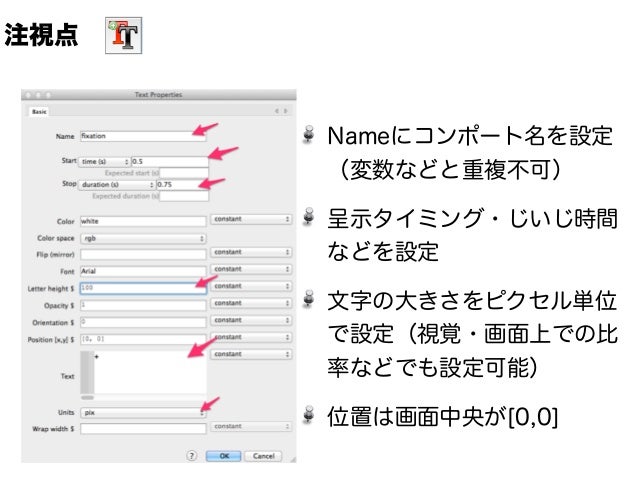
screenindexdisplay.getStimulusScreenIndex () Read the coordinate space the script author specified in the config file (right now only pix are supported) coordtypedisplay.getDispla圜oordinateType () Create a psychopy w. Run the example in the terminal with the following command: python psychopy_stimulus_example. screenresolution display.getStimulusScreenResolution () get the index of the screen to create the PsychoPy window in. # Show the window (it should be empty, but we need it to record keyboard events) presented near the end of Chapter 2 in the section Example: Directory Structure for the Book': Ch5.

Copy-paste the following text and save it as “psychopy_keyboard_example.py”: # Import modules Crafting Visual Transformation Scripts Shai Vaingast. Now we will run a simple keyboard example script. Then use the terminal to run the file with a command: python psychopy_stimulus_example.py # Show the window after drawing the stimulus Message = visual.TextStim(window, text='Stimulus!') # Refresh/update the window (with the fixation point drawn on) # Prepare a fixation point (we will draw it in the next step)įixation = visual.TextStim(window, text='+') Open some text editor, e.g., Gedit (on Ubuntu), paste and save the following text to a filename named, e.g.: “psychopy_stimulus_example.py”: # Import modules Windows is generally not Python friendly, and installing all dependencies and virtual environments can be harder for a beginner even than installing a dual-boot Linux or just getting some old PC and installing Lubuntu there. I don’t recommend beginners using PsychoPy on Windows.
VISUAL TASK PSYCHOPY EXAMPLE CODE INSTALL
Install PsychoPy: sudo pip install psychopy Open a terminal ( 5 Ways to Open a Terminal Console Window Using Ubuntu). Hence, I prepared this basic example featuring:

However, it seems that entry-level examples one can find in the web are rather sophisticated. PsychoPy is an excellent tool for preparing psychological experiments in Python.


 0 kommentar(er)
0 kommentar(er)
